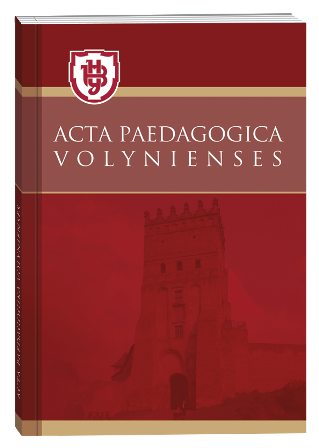SOCIO-CULTURAL REHABILITATION OF CHILDREN WITH DISABILITIES IN WAR CONDITIONS
DOI:
https://doi.org/10.32782/apv/2022.6.15Keywords:
competence formation approach, communicative competence, the language of learning, methods, techniques, criteriaAbstract
The article highlights the key aspects of socio-cultural rehabilitation of children with disabilities in wartime from a practical perspective. It was found that the war has a significant impact on the emotional, psychological and physical condition of children with disabilities. In these circumstances, children with disabilities have been found to be at greater risk when their communities are attacked, not only because of their young age, but also because of their disability. It was found that an important measure in the rehabilitation of children with disabilities from the consequences of war is socio-cultural rehabilitation. It was found that the practical application of socio-cultural rehabilitation methods (supporting children with multiple developmental disabilities with the help of online projects, help of volunteers, comprehensive rehabilitation centers, public organizations, art therapy, fairy-tale therapy, improvement of the library service system, participation in festivals, master classes, sports games, theatrical exhibitions, film projects, etc.) helps to optimize the living conditions of children with disabilities, to use and develop their potential to adapt to new realities and overcome various social problems as fully as possible. It has been established that social and cultural activities allow children with disabilities to take an active part in the cultural sphere and cultural life. It was revealed that an important component of the socialization of children with disabilities is rehabilitation in specialized institutions. An important role in the functioning of rehabilitation centers for children with disabilities in wartime is played by charitable foundations, volunteers and international organizations that provide financial assistance. Using fairy-tale therapy as one of the forms of socio-cultural rehabilitation of children with disabilities, the range of psychological resources of such children expands and they become stronger against traumatic experiences. It was determined that today, in the conditions of war, centers of complex rehabilitation for children with disabilities organize entertainment, puppet shows and holidays, because these cultural events improve the emotional state and have a positive effect on the mental state of a child with disabilities.
References
Громадська організація «Творчість. Ініціатива. Енергія.». URL: https://pryiutivka-community.gov.ua/go-tvorchist-iniciativa-energiya-11-15-16-26-08-2022/
Ми всі рівні. Хочу, щоб діти з інвалідністю це також відчували. URL: https://www.unicef.org/ukraine/stories/possibilities-with-no-limits
Новорічний настрій для дітей з інвалідністю на Миколаївщині. URL: https://www.ispf.gov.ua/news/novorichnij-nastrij221230
Робота бібліотек на допомогу користувачам з обмеженими фізичними можливостями. Випуск 1. URL: https://zounb.zp.ua/resourse/zaporizkyy-kray/zaporizhzhya-bibliotechne/fahova-osvita/robota-bibliotek-na-dopomogu-koristuvacham-z-obmezhenimi-fizichnimi-mozhlivostyami-vipusk-1
Соціальний проект «Обіми батьків – те, що стоїть зараз між дитиною і війною». Як змінюється життя підлітків в Україні. URL: https://www.the village.com.ua/village/city/social-project/326345-unicef-dorosli
Фестиваль «Повіримо у себе». URL: 7. Чернишенко О. І. Соціально-культурна реабілітація молодих інвалідів, зарубіжний досвід. Науковий вісник Кременецького обласного гуманітарно-педагогічного інституту ім.
Тараса Шевченка. Серія: Педагогіка. 2013. № 1. С. 171–178.
Як малювання та казки зцілюють травму війни? Рішення від кризових психологів. URL: https://rubryka.com/article/painting-and-fairytales-during-war/







